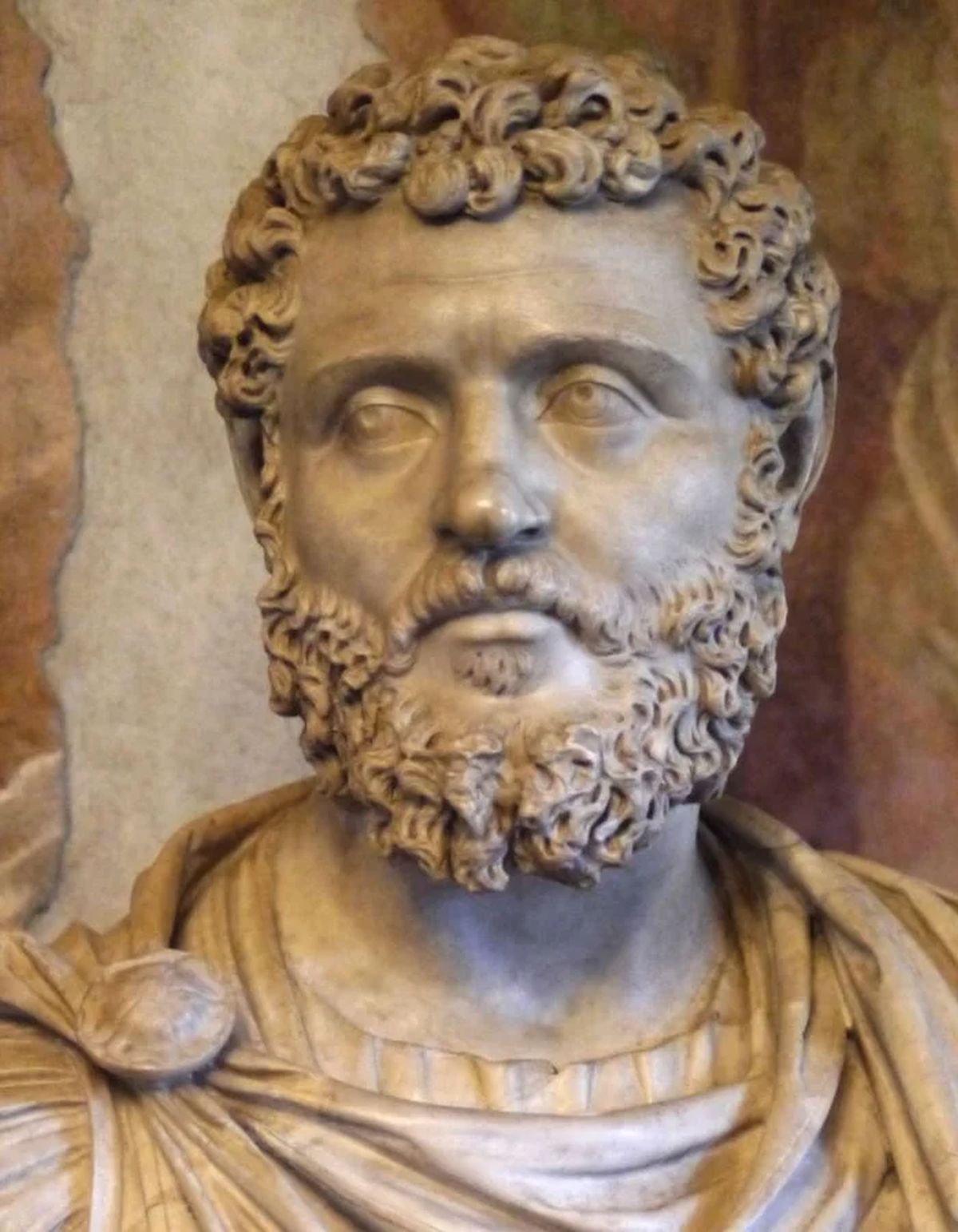After the Roman Emperor Commodus was assassinated in 193 A.D. leaving no heir, the Antonine dynasty came to an end and Pertinax was offered the emperorship by the assassins. Pertinax thus became emperor in 193 with the approval of the Senate and the army, but he was assassinated by his soldiers about three months later as a result of some of the policies he pursued and the promises he failed to fulfill. After Pertinax’s assassination, there were two names in the lobbies to sit on the vacant imperial throne: Pertinax’s father-in-law Sulpicianus and Didius Iulianus, who was a senator at the time. This article aims to provide a brief overview of how Didius Iulianus became emperor and what happened in the Roman Empire during his short reign.
Didius Iulianus was born in Mediolonium (Milan) on January 30, 133. He was educated by Domina Luculla, mother of Marcus Aurelius. He became quaestor, aedilis and praetor respectively. He also commanded the XXIIth Primigenia Legion in Germania and achieved a series of military successes. He held administrations in Belgica, Lower Germania, Bithynia and Africa. He held the consulship together with Pertinax. Didius Iulianus’ relationship with Pertinax remained good after he was proclaimed emperor following the assassination of Commodus.

After the murder of Pertinax by Roman soldiers, Didius Iulianus received news that Sulpicianus, Pertinax’s father-in-law, was holding a meeting with the notables of the city. Didius Iulianus then intervened in the meeting by making various promises to the soldiers in the city and gathered their support. Then he bribed the soldiers and bureaucrats in Rome with a large amount of money and with their support, he appeared before the Senate and was declared emperor. Thus, Didius Iulianus sat on the Roman throne with the title of Augustus. However, the proclamation of Didius Iulianus as the legal emperor failed to establish order in the empire. For not all legions could be expected to be loyal to an emperor who bought the right to rule with money.

Ramón Acedo. Originally the artwork was published in Desperta Ferro
The Roman people hated Didius Iulianus and the soldiers of Clodius Albinus in Britannia, Septimius Severus in Illyria and Niger in Syria declared their commander emperor. Thus a situation of civil war emerged. Although Didius Iulianus sent an elite soldier to assassinate Niger, the assassination attempt did not succeed and the news of the rebellion from Septimius Severus, which he did not expect, worried him even more. Didius Iulianus then persuaded the Senate to declare Septimius Severus and his soldiers traitors.
However, when Septimius Severus marched his army as far as Ravenna and many senators who had initially supported Didius Iulianus changed sides, Didius Iulianus put forward the idea of sharing imperial power with Septimius Severus. However, the confident Septimius Severus had no intention of accepting this proposal. Didius Iulianus organized a military resistance as Septimius Severus continued to advance, but it proved too weak. After a while, Didius Iulianus lost all his supporters and was left alone. The Senate proclaimed Septimius Severus as emperor. Following this proclamation, soldiers executed Didius Iulianus on June 1, 193, by order of Septimius Severus. With the proclamation of Septimius Severus as emperor, the era of the Severan Dynasty began in Roman history.
Source
https://en.wikipedia.org/wiki/Didius_Julianus
https://www.worldhistory.org/Didius_Julianus/
https://en.wikipedia.org/wiki/Julian_%28emperor%29


